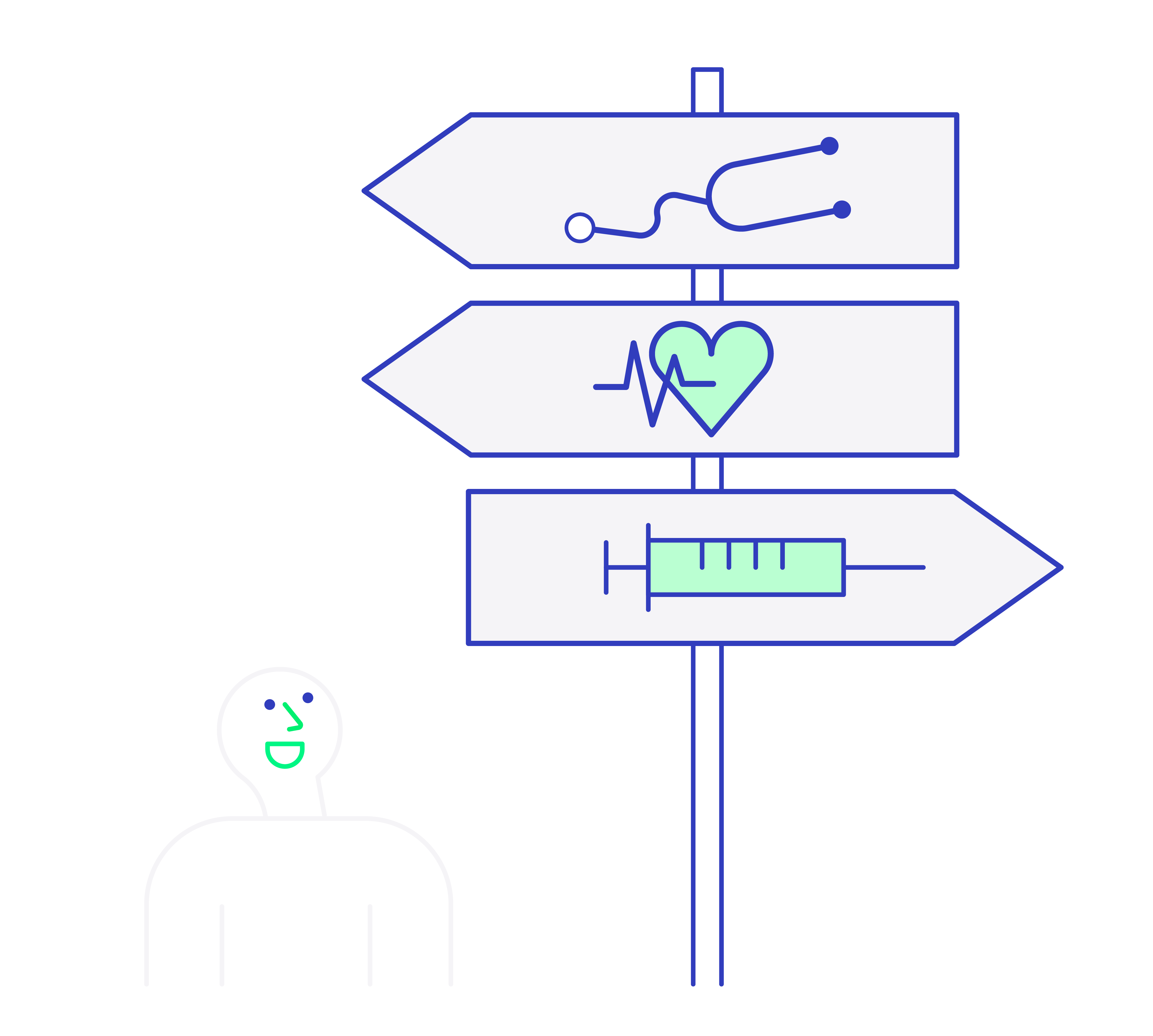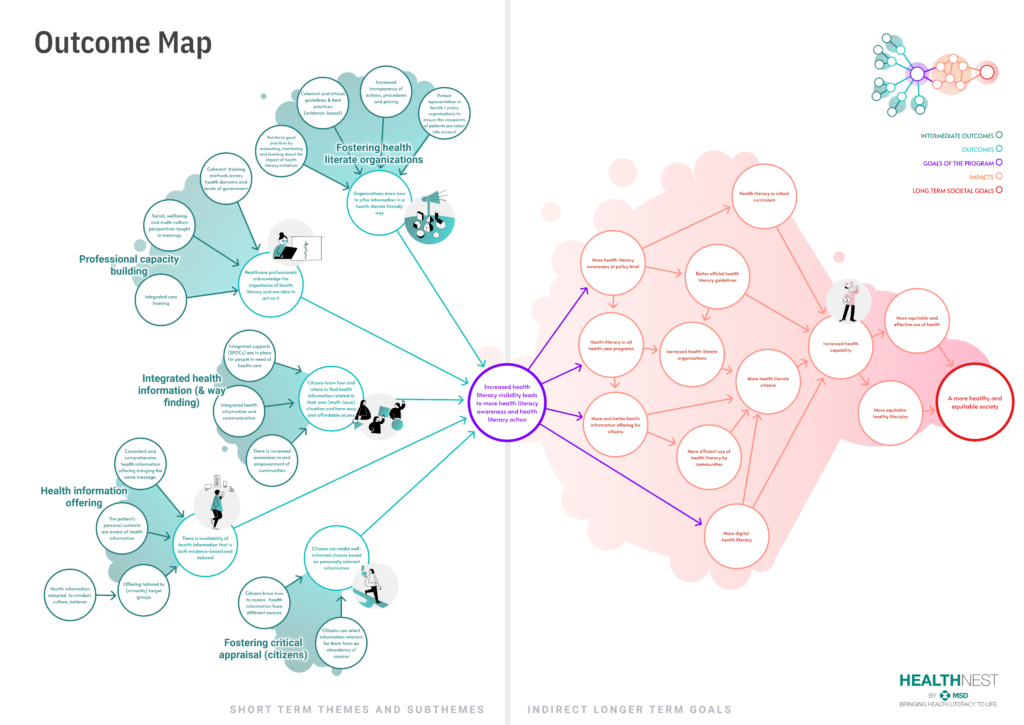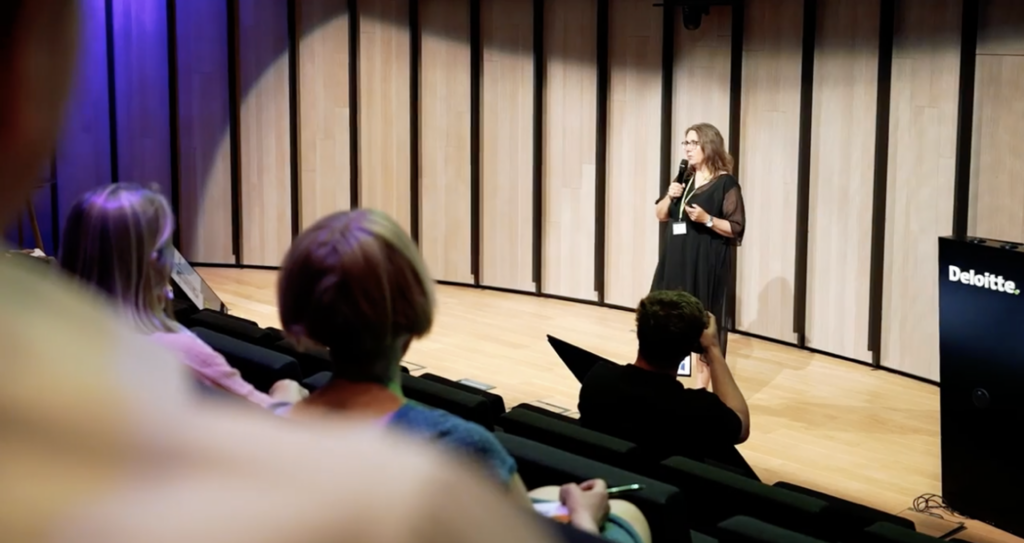HealthNest
Improving health literacy in Belgium

HealthNest is a partnership between professionals and organisations working to improve health literacy in Belgium. HealthNest asked Namahn to help to make the partnership even more impactful. Namahn proposed to use a systemic design approach to define a reinforcing framework and action plan.
| Client | Sector | LAnguage | Team |
|---|---|---|---|
| SPF Social Security, DG persons with disabilities | Public | French / Dutch | 3 Designers |
Our approach was co-creative, using workshop formats. As this project continued during lockdown, these workshops took place largely digitally. We facilitated via Teams and Miro and then worked out the deliverables in Figma. This project was carried out in collaboration with Growth Inc., which provided stakeholder management and communication.
Approach
The first step in this project was drafting a causal loop system map depicting the driving forces, barriers, and leverage points of health literacy today. This map was made through the study of health literacy research and the support of Professor Stephan Van den Broucke (UCL).
Next, we prepared, facilitated, and processed a series of workshops:
- A workshop to review the system map and plot the emerging initiatives.
- A strategy workshop to define the intervention levels to act upon and to map out the intended direct and indirect impact and the activity areas to achieve this.
- A validation workshop to review the outcome with experts.

Result
These workshops resulted in the intervention map shown above. Based on the outcome model technique, this map shows the activity areas on the left and the desired impact from the centre towards the right. The map didn’t show the activities yet as these would be defined in a big co-creation event with all professionals and organisations present. During this event, the participants brainstormed about possible actions and reflected on how they could collaborate to achieve this. This was again visualised in a map showing the ongoing activities and collaborations.
The project resulted in several collaborative actions, both bottom-up and top-down, in particular, the organisation of a health literacy conference attended by around one hundred participants.
